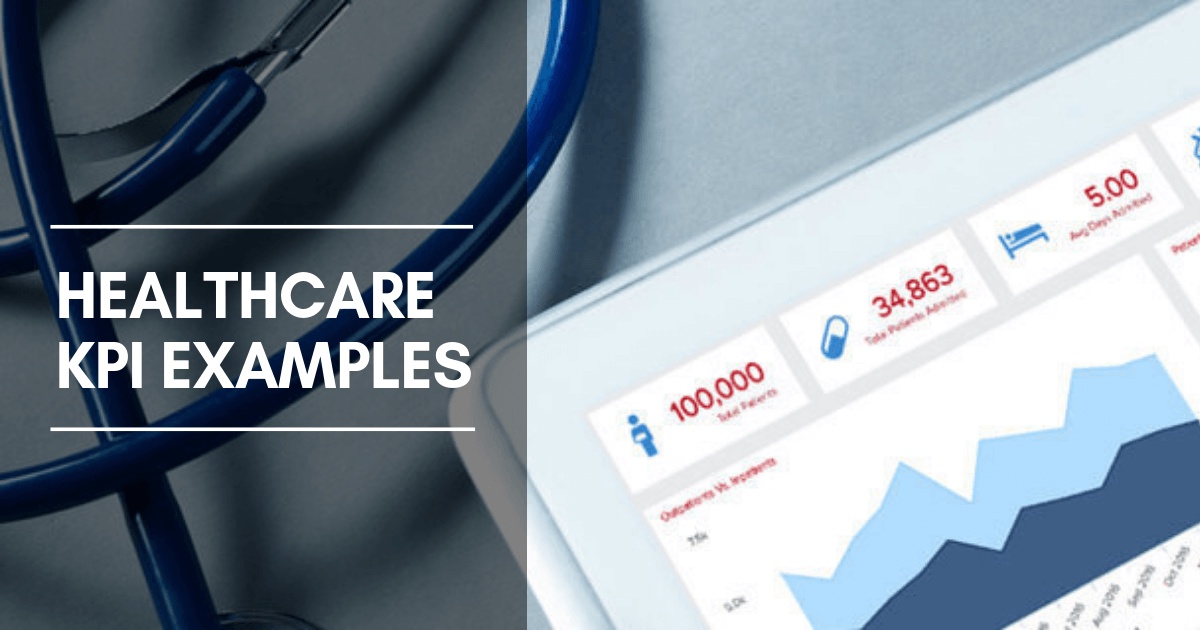Key Performance Indicators (KPIs) and metrics are essential tools in healthcare management. They provide valuable insights into the performance, efficiency, and effectiveness of healthcare organizations. The healthcare industry is evolving rapidly, and tracking the right KPIs can help hospitals, clinics, and other healthcare providers stay competitive and deliver better patient care. In this article, we will explore 25 of the best healthcare KPIs and metric examples, grouped into various categories, to help you monitor and improve your healthcare organization's performance.
1. Patient Satisfaction Score (PSS)
The Patient Satisfaction Score measures the overall satisfaction of patients with the care and services provided. It's typically measured through surveys and feedback forms.
2. Net Promoter Score (NPS)
NPS assesses patient loyalty and their likelihood to recommend your healthcare facility to others, providing valuable insights into your reputation.
3. Readmission Rate
This metric indicates the percentage of patients who are readmitted to the hospital within a specified time frame (e.g., 30 days) after their initial discharge. Lower readmission rates are often associated with better care quality.
4. Average Length of Stay (ALOS)
ALOS measures the average number of days a patient spends in the hospital. Shorter ALOS may indicate improved efficiency and cost management.
5. Bed Occupancy Rate
This KPI helps you understand how efficiently your hospital's beds are utilized. A higher occupancy rate may mean better resource utilization, but it can also lead to patient overcrowding.
6. Case Mix Index (CMI)
CMI assesses the complexity and severity of the patient cases you treat, influencing the hospital's reimbursement rates.
7. Hospital-Acquired Infection Rate
This metric tracks the percentage of patients who acquire infections while in the hospital, providing insights into your facility's infection control measures.
8. Physician Productivity
Measure the efficiency of your medical staff by tracking the number of patients seen per day or the volume of procedures performed.
9. Revenue per Patient
This KPI calculates the average revenue generated per patient, helping you understand your facility's financial performance.
10. Operating Margin
Operating margin indicates the percentage of revenue remaining after covering operating expenses. It's a critical financial metric for healthcare organizations.
11. Accounts Receivable Days
This metric shows the average number of days it takes for your organization to collect payment for services rendered.
12. Physician Turnover Rate
Monitor the turnover rate of your medical staff to assess the stability and job satisfaction within your organization.
13. Staff-to-Patient Ratio
Maintaining the right staffing levels is crucial for patient care. This metric helps you balance resource allocation and patient needs.
14. Emergency Department (ED) Wait Times
ED wait times can significantly impact patient satisfaction. Monitoring this metric helps you improve access to care.
15. Surgical Site Infection Rate
Track the percentage of surgical patients who develop infections at the surgical site to evaluate the quality of your surgical procedures.
16. Medication Error Rate
Reducing medication errors is critical for patient safety. This KPI measures the frequency of medication mistakes.
17. Telehealth Utilization
As telehealth becomes more prevalent, tracking the utilization rate can help gauge the adoption of virtual care services.
18. Patient No-Show Rate
High no-show rates can affect appointment scheduling and revenue. Monitor this metric to improve patient attendance.
19. Wait Time for Specialist Appointments
Evaluating the time it takes for patients to see a specialist can highlight access issues in your healthcare system.
20. Employee Engagement Score
An engaged workforce is more likely to provide quality patient care. This metric measures staff satisfaction and commitment.
21. Hospital-Acquired Pressure Ulcer Rate
Monitor the rate of pressure ulcers developed by patients in your care to enhance your prevention efforts.
22. Compliance with Regulatory Standards
Ensure your organization meets all necessary healthcare regulations and standards to avoid penalties and maintain patient safety.
23. Health Information Exchange (HIE) Usage
Evaluate the usage of HIE systems to improve information sharing and coordination of care among providers.
24. Cost per Quality-Adjusted Life Year (QALY)
Assess the cost-effectiveness of healthcare interventions by calculating the cost per QALY gained.
25. Return on Investment (ROI) for Wellness Programs
Wellness programs can promote preventive care and reduce healthcare costs. Measuring ROI helps determine their effectiveness.
Conclusion
Tracking these 25 healthcare KPIs and metrics can empower healthcare organizations to make data-driven decisions, enhance patient care, and improve operational efficiency. Keep in mind that the selection of KPIs should align with your organization's specific goals and priorities. Regularly analyzing and adapting your chosen metrics can lead to continuous improvement and better healthcare outcomes. By focusing on these key performance indicators healthcare providers can strive for excellence in patient care and financial sustainability.


No comments yet